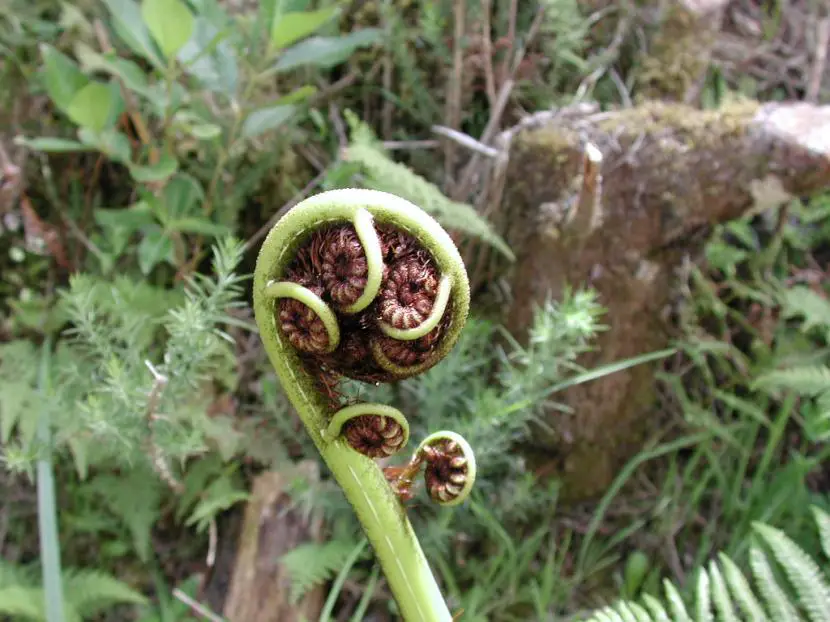
The plants we know today have not always existed. Since the Plant Kingdom began its evolution, about 450 million years ago, they have changed a lot: both the leaves, as well as the stems and their root system.
Due to the changes that have taken place on the planet throughout this time, they have been adapting as best they could to the various conditions that have been encountered. A) Yes, You might think that it is currently impossible to find primitive plants, but the truth is that there are. Some of them are very, very well known .
psilotum

If we want to dedicate ourselves to looking for primitive plants, it is highly recommended to go to the south of Spain or to the subtropical areas of America, Asia or Africa to find what is probably one of the oldest existing today: Psilotum has been on Earth for more than 400 million years.
It is a fern that has no leaves, but produces small scales. The task of photosynthesis falls on the stem, which is green due to chlorophyll. The plant is anchored to the ground thanks to its rhizomes, since it has no roots. In addition, it reproduces by spores, the first “seeds” that nature produced.
Conifers

Picea abies
Conifers are the result of several million years of evolution. An achievement of plant nature. They appeared 300 million years ago. Until then, there were no plants with proper trunk or leaves, they did not even protect their spores properly.
The Pinus, the Sequoia, the Spruces, … all these magnificent plants developed the first woody trunk that would lift them off the groundwhich would allow them to capture more light than the others. As if that were not enough, the first more or less leathery seeds emerged, which could remain viable for months and even years before germinating.
Cycas

Our Cycas they are one of the most cultivated shrubs in the world. They are capable of withstanding temperatures between 42ºC maximum and -11ºC minimum with hardly any damage. They grow mainly in Asia, but their ornamental value is so high that it is possible that in practically all gardens there is at least one specimen.
The first began their evolution 270 million years ago. They look similar to that of palms (plants that, by the way, appeared 145 million years ago), but in reality they are more related to conifers. They have a more or less short trunk and leathery leaves. The inflorescences emerge from the center of the crown, which end up protecting the seeds.
Ginkgo

The Ginkgo. This tree can be found growing naturally in Asia, but in the past it is more than likely that it would have colonized all the temperate regions of planet Earth. It is one of the most primitive that exist: its relatives, belonging to the Ginkgoaceae family, arose about 270 million years ago.
Although today only a single species remains, the Ginkgo bilobawe can get an idea of what it must be like to walk through Ginkgo forests, conifers and ferns. And it is that these plants were the first to have a unique behavior: its leaves fell during autumn-winter. Thanks to this survival measure, they could save water and energy until the good weather returned.
Arboreal ferns

Cyathea dregei
Tree ferns, like those of the genus cyathea, dicksonia o blechnum, are plants that live in tropical and subtropical regions of the world, especially in America and Australia. It is estimated that they appeared about 200 million years ago.
Currently it is a joy to see them in the gardens, and even more to be able to contemplate them in their natural habitats. They were the second vegetables to develop a trunk. Its leaves are capable of photosynthesis without problems, and its roots, although superficial, are designed to absorb water and nutrients from the soil.

Cretaceous Pteris
All these plants are GymnospermsThat is, they do not have showy flowers like orchids do, for example. In the past it was not necessary to have flashy petals as there were hardly any candidates for pollinators. But as the Animal Kingdom evolved, plants adapted to them as well. Thus, the first with beautiful flowers would appear more than 150 million years ago.
Did you know the primitive plants?

